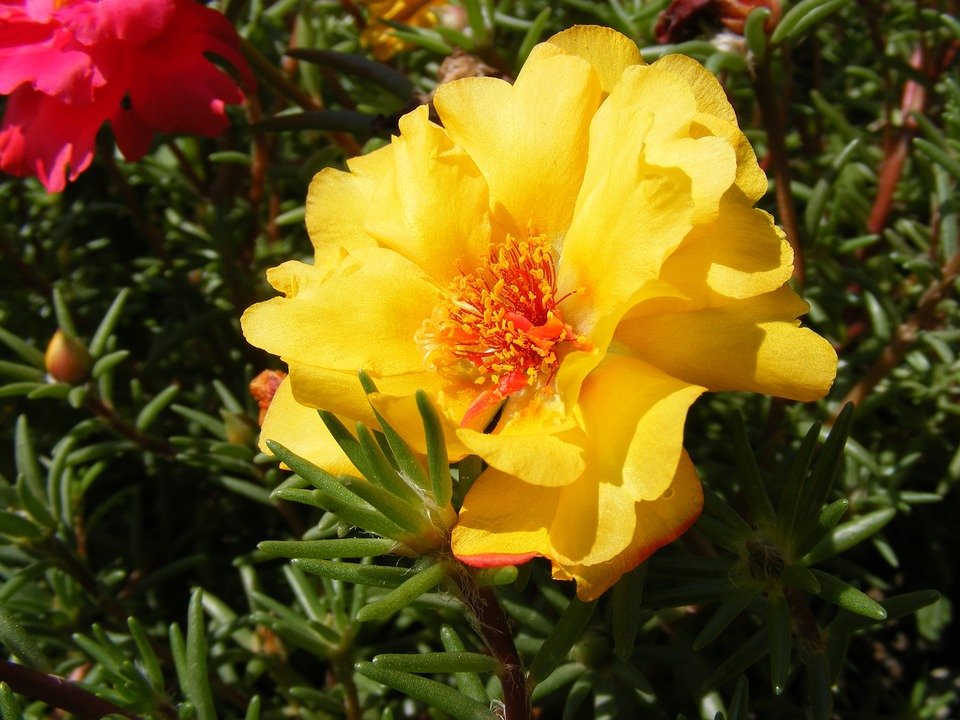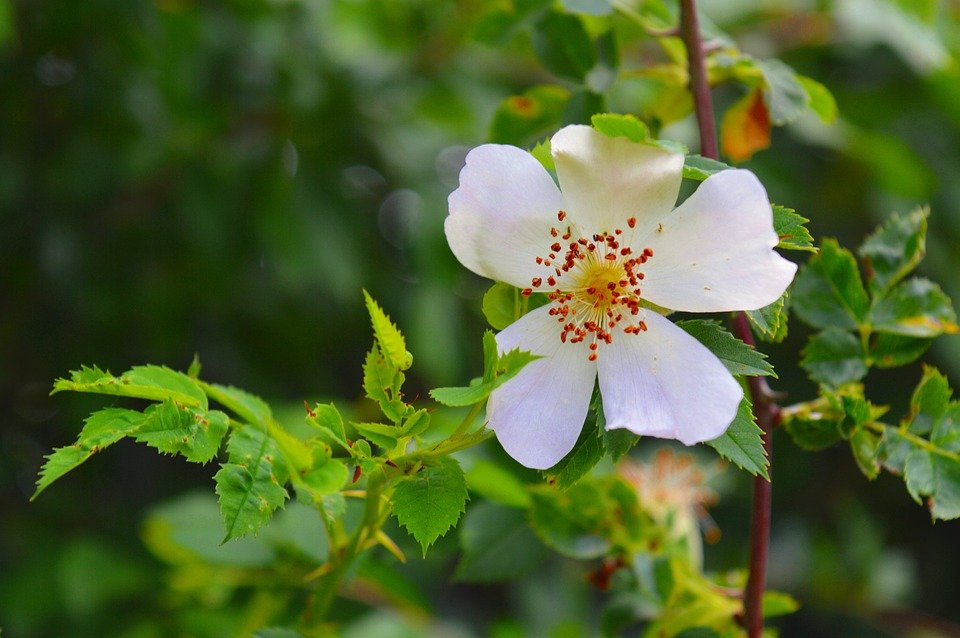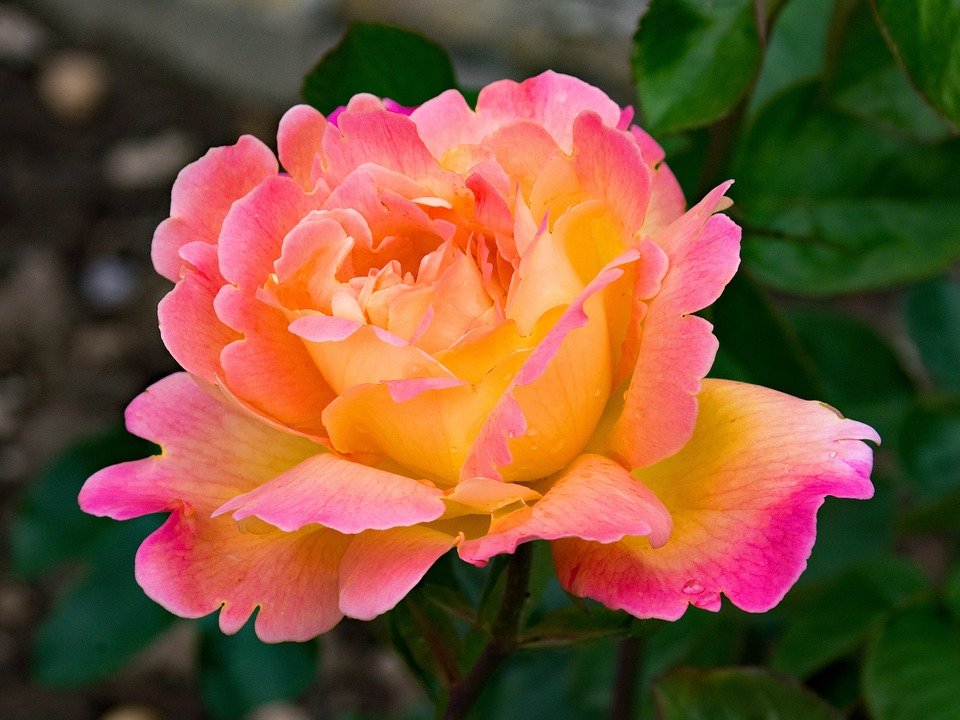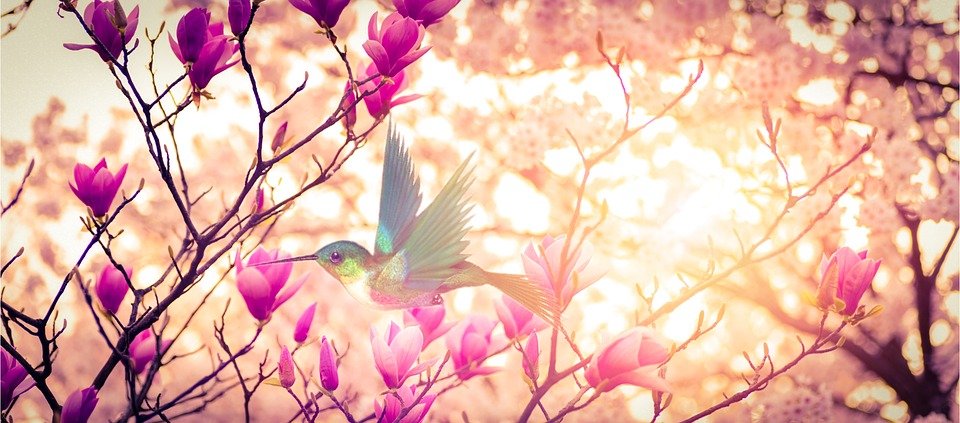Welcome! Are you ready to learn valuable information about plants that you eat? I am!
The name of this series is Veggie family study guide, but we have basically covered all the usual veg found in the north american hemisphere. So, we will move on to things are not vegetables like fruit trees and grasses!
'Plant family study guide' just doesn't sound the same though, so unless I come up with a catcher title this will still be the veggie family study guide but about fruits, herbs and other plant treasures.
If you haven't read the previous posts or need a refresher, here they are! It is always easier to learn it the second time around, and will stick in your head longer once you read it again.
- In the first post we learnt about the Cruciferae (cabbage/broccoli) family, Solanaceae (tomato or nightshade) family, and the Lamiaceae (mint) family.
- In the second post of the series we got to know about the Cucurbitaceae (cucumber/melon/squash) family, the Leguminosae (legumes) family and the Chenopodiaceae/Amaranthaceae (beetroot) family.
- In the third post we reviewed the Compositae/Asteraceae (sunflower) family, the Liliaceae/Alliaceae (onion) family and the Umbelliferae/Apiaceae (carrot) family!
Now, let us get into study mode. In the next two posts we will be learning about two important families, the Rosaceae (rose) family and the Poaceae (grass) families! You might be surprised at the diversity of these two families and their serious importance to our diets, as they are widespread and both are staples to people across the world. In this post we are going to start with the Rosaceae family!

(Grandiflora type rose)
The Rose and Fruit Family - Rosaceae
Think of the fruit you love most, one that grows in the northern hemisphere. Think strawberries, cherries, blueberries, apples, pears or nearly any other northern fruit. Turns out, those plants all belong to the Rosaceae family! Weird right? Who knew strawberries and roses were close relatives?
This vast family includes over 2500 plant species, of which most but not all are perennials, and they can be grown nearly everywhere (but most prefer the northern hemisphere). Even almonds belong to this family. Here in the Okanagan valley of British Columbia, Canada, these crops are of the upmost importance. Apples, cherries and peaches are incredibly popular and are shipped out across the world from our scenic valley, and we even have an apple museum!
All of the flowers and fruits in the rose family have similar 5 petaled and fragrant flowers and serrated leaves, with some other similarities, but other then that they can be very different from each other! Each has its own preferred growing conditions and uses, from beautiful and showy roses to an economical apple tree. Let us briefly explore a few members of this family and get an idea of how best to grow them!

(White wild dog rose)
Lets start with roses, the most beautiful of flowers.
Roses have been on object of affection for human beings since times long past, their beautiful varieties adored and sought after and their flowers well cared for by royalty and even churches, among other people. No wonder they have survived and flourished throughout time, they have a found a friend in us!
In times past, people actually communicated through flower language, by placing flowers on the table or gifting certain flowers they communicated certain messages. Today, we often see the rose as a symbol of love, but in times past the rose actually meant secrecy. For example, a rose above the door of a meeting room communicated that all things said there should be kept secret or 'sub rosa' and this was common in Roman times (Garden Primer pg 520). Napoleons wife Josephine is said to have coveted roses an enormous amount and collected many from across the globe, assembling what some say was the greatest rose collection in the world.
The rose flower is very steeped in history, symbology and stories. Honestly, I could make a whole entire post (or two) just about rose history, and its so enchanting that I just might! It is no wonder, because roses are a beautiful flower for an ornamental garden, and their flowers fragrant. I love to use the flowers in baths or in potpourri, and the rose hips (harvested after the first frost for sweetness) are especially nutritional and high in vitamin C, making them a great tea during the long winter months and refreshing when its warm.
There are also many kinds of roses available to grow, incredibly diverse and nearly one for every habitat. There are many types such as the hybrid tea (modern kind of roses), old roses, floribunda, climbing roses, shrub roses, grandiflora, miniature, wild roses and more! It is up to you to decide which sort of rose to grow, as each has a different temperament and needs different conditions.
In general, they like a Ph of between 6 and 7, enjoy a little more moisture retentive clay rather then sand (but still with good drainage), and of course lots of good organic matter. The have long roots, so need a good amount of root space! They also need regular water in order to bloom (who would want to make such energy and baby filled flowers in a drought?), they need to be pruned on occasion (and deadheads removed) and they all need some sort of winter protection in colder climates (such as heavy mulch over winter).
Roses are a glorious plant to grow and behold. They bring beauty, fragrance and delicious tea to their friends and caretakers. Personally, I find it hard to pass a rosebush without stopping to smell the flowers!

(Hybrid tea type rose, a popular and more modern type)
Now, lets move on to some more well known fruits belonging to the Rosaceae family, though I won't be getting through them all.
There are many sorts and forms of fruit found in this family, each in their own catagories with their own taxonomical names. They all have different characteristics and species within the groups too! A common feature of many of the Rosaceae family fruits is that;
" Many of the fruits in the rose family are edible, but many of their seeds contain amygdalin, which may convert to cyanide during digestion. Since that is a poison which can build up in the tissues of the body, one should not eat apple cores or feed them to your pets. " (theplantprofiler.com)
Good to know! I was always told I would grow an apple tree in my belly, but there is a good scientific reason not to eat the seeds too. Now, lets get into some details using common names, because nomenculture can get really confusing.
- Apple: Apples are sweet and succulent fruits, and go good in so many dishes and desserts! There are many varieties, and you can choose one specifically for your climate and tastes. You need two apple trees that bloom around the same time to get apples however, so keep that in mind! Apples need a bit of cold in the winter, or chill hours, in order to set fruit. This time varies between varieties, so check that out. Apples like a heavier but well drained soil, rich in organic matter, air and moisture. Of course, mulch and sun are also very important! And, as with most fruit trees, apples need regular pruning when they mature and some diligence to avoid pests and diseases that may attack your tree. Everyone has their own pruning and pest preventing philosophies, so you will have to do your own research on that!
- Pear: Pears are a joyful and very juicy fruit, somewhat similar to apples but generally easier to grow. You can eat pears raw, bake them, or my favorite; can them! They are beautiful and don't need too much attention, since they are more pest and disease resistant then apples. They can even be planted in smaller spaces or in containers! Some of the only drawbacks for pears is that you need at least two trees for pollination and therefore fruit, and they can take 3 to 10 years to fruit for the first time. However, when they do start fruiting, you probably won't run out for a long while! As with most fruit trees, they need good rich soil that is well drained but still retains moisture, and they need to be placed somewhere front wont pool and other tree will not over compete with them! I think pears are one of the first fruit trees I will try growing, since they are pretty easy, can start out in a container, and I know they are a longer term project.
- Almond: Almonds grow on beautiful trees, with white blossoms similar to others of this family. Almond trees are a little finicky to grow, because they do not like wet feet at all. They prefer drier ground, protection from spring frost and mud, and a hot dry summer too. This seems to be because they are susceptible to blight which will kill them easily. If you have drier conditions and somewhat mild winters, you might be able to grow your own almonds! They do however need more then one tree for pollination and deep root space, preferably in fertile and well draining sandy loam. They are somewhat drought tolerant too! Almonds need 180-240 days for the nuts to mature. The nuts are mature when the nut inside the shell has dried out quite a bit and the shell cracks. Apparently, you harvest them by shaking the tree. I suppose an umbrella would be useful?
- Cherries: Cherries are a beautiful and delicious fruit tree to have. They have either white or pink blooms that rain cherry blossoms in the wind, capturing many imaginations. Their red and succulent fruit is a delicacy in my eyes. There are in fact two kinds of cherries, sweet and sour. The sweet ones are the ones you are probably most familiar with, and these sweet fruits need to be in zone 5-7 to grow, and you need more then just one for them to pollinate. There is a dwarf variety called 'stella' that is both sweet and self pollinating however! Sour cherries on the other hand can tolerate hardiness zone 4, and are used in cooking and preserves rather then eaten raw. However, these varieties are all self fertile! Both kinds of cherries will make fruit after about 4 years, and then will produce a lot of fruit for you (as long as the birds don't eat it first!). Cherries need deep and fertile soil and also need their fruits to be thinned, and have some other considerations for pests and diseases. As always, fruit trees are a long term investment!
- Peach: Ahh, the sweet fruit of the goddess, that is what I think peaches are. They are like rays of sunshine in a very juicy fruit! Peaches enjoy a little warmth, above zone 5 hardiness but below zone 8. Here in the Okanagan there are peaches grown in certain places, and we are zone 4a. As usual, each kind of peach enjoys different conditions, to choose one thats right for your area! Farmers Almanac has some cool tips for growing a peach tree, and I think I might try this method: " If your circumstances are suitable, you might want to try a technique practiced in England. It involves planting a peach tree—ideally a dwarf variety—on the south side of the home or other building, under the eaves of the it. Over time, the gardener prunes and trains the peach tree to espalier in a fan-shape against or very near to the wall of the house. Plastic sheeting is attached to the eaves and draped to cover but not touch the tree, similar to a lean-to. This keeps the tree dry in winter, and the tree enjoys the warms of the sun, directly and as reflected off the house, year round. The plastic should be opened or lifted during bloom time to welcome pollinating insects and on hot, sunny days to ventilate the tree and prevent foliage burn. "
- Apricot: Apricots are a treat, and they bloom early and provide early food for pollinators. My favorite part about the apricot, other then the fruit, is the fact that they are somewhat drought resistant! For our semi desert climate that is a very important consideration. Garden.org recommends that you plant the tree on the north side of a building if you are in the north, so that the tree don't warm up too soon and bloom before the temp evens out. They do well in many sorts of well drained soils.
- Plum: Turns out, plums are good for beginners! And they are so yummy, I think I will try this one out. You can make them into some pretty delectable home made wine, pie, preserves and more and more. I just love plums! There are lots of different types too, one for each need, and they are placed into the three categories of European (for colder climates), Japanese (for warmer climates) and Damson, and also American hybrids for other climates. Apparently they require less care then most other fruit trees, are smaller/ more compact. Like other fruit trees however, you may need more then one for pollination. Too many plums mean lots to give away! They are also stone fruits like peaches. They like well drained and fertile soil (who doesn't?) and want to be out of the wind. There are other considerations of course, but plums really do seem to be one of the most simple of the fruit trees, and I am excited to try this fruit tree out right away!
- Raspberry: Now we are onto those delectable berry bushes that also belong to the Rosaceae family. It really doesn't surprise me too much that raspberries and roses are related, because they both grow together wildly in these parts and are both really damn spiky! They like cooler climates, and are self fertile. Bees love to polinate them, and they reward us with big juicy fruits, or small ones if they are wild. There are summer-fruiting raspberries and ever bearing ones. I want to try and cross my wild raspberries with some ever bearing raspberries to try to get the tart wild flavor but bigger and more often. Berry season is just too short! Black raspberries are also pretty rare, but super delicious and very vigerous. We have found a whole 3 wild black raspberry plants on our mountain, among thousands of red ones. We also grow a few close to our home. I think the most important part about raspberries, and basically their only chore other then eating them, is to prune their canes every year. A cane only bears fruit for two summers, in the first year it is green and in the second it goes brown. After the second year, the cane dies, and more new ones pop up. New growth cannot occur if there are tons of old dead canes in the way, so prune away (summer bearing: anytime between last harvest and spring growth, ever bearing- cut all canes to the ground after harvest and before spring, or if you want more then just a fall crop then prune everything that bore fruit the previous year)! Also make sure you remove the pruned canes because they can carry diseases or pests. Raspberries also dislike being crowded by grass, so mulch is good! These are such yummy berries its ridiculous!
- Blueberry: Did you know that blueberries were not cultivated domestically before the 1900's, they were only found in the north american wild! They are a berry full of anti oxidants and nutrients, and they are plump and pretty too. They can be pretty bushes too, and birds love them as much as humans, so watch out! You can get high bush, low bush, or half high hybrid bushes. They are like they sound, and most bushes are the high kind. Blueberries also thrive in acidic soil with a pH between 4 and 5! Farmers Almanac says "the more organic matter added, the more tolerance to acidity blueberries will have." And they also want mulch to kept moist, with a couple inches of water every week. When you plant a new blueberry bush, do it early in the spring, and don't let them fruit for the first year or so. Luckily, they do not need to be pruned for the first few years, but once they are mature in about 4 years they will need some pruning. Other then that, blueberries are pretty easy, and you just gotta eat them before the birds do!
- Strawberries: The last fruit of the Rosaceae family that I will talk about, but this is definitely not an exhaustive list, and we saved the best for last. The romantic strawberry, a fruit of joy. And oh man, does it pay to grow your own. They are so much more sweet when straight out of the garden, so much more juicy, and you can avoid the ridiculous amount of fungicide applied to most store bought strawberries. They are like candies! And the tiny wild strawberries even more so then the everbearing, day neutral or junebearing ones, all of which bloom and fruit at different times. As the name implies, strawberries like mulch, such as straw. This keeps their sprawling vines off the damp ground. They also like a pH between 5.5 and 7, and most prefer well drained loamy soil more then anything. Some recommend to plant new strawberries every year and change their location, but my grandparents have grown a huge and productive strawberry patch in the same spot for a long time, and as long as you occasionally change out plants that have gotten too old, there does not seem to be anything wrong going on. One thing you might have to watch out for, however, are bugs and little critters that take little bites out of your berries. These guys can dig under the garden or crawl through tiny holes, and I have seen entire giant mesh cages be erected just to protect these little jewels. I love them so much, that might just be the path I am heading down as well!
The importance of the Rosaceae family to our diets and economy is pretty astounding. Almost all of my favorite fruits are on this list! And, I haven't even gotten into the other wondrous members of this family.
Some of these are found here in the pacific northwest wilds and play important parts in the ecosystem here, such as serviceberry, thimble berry (YUM), blackberry, chokecherry, quince, crabapple, hawthorn and mountain ash. There are more too. I am sort of astounded to find out how many of the wild plants around here are from this family! They are like close friends to us already haha.
If you want to learn more about the proper subfamilies and plant identification of the Rosaceae family, check out the page at wildflowers-and-weeds.com.
There are tons of resources on the web to further your insight into these plant families. Research is an important self-studying skill! The realm of plants still holds many mysteries too, endless amounts of discoveries to be made and human-plant relationships forged.
Have you met some of the members of this family in your lives? I would be surprised if you have not, because they are pretty damn awesome. One of my favorite plant families so far, because they give us natural and delectable sweet fruity treats!
Now, for some review! If you answer at least 3 of these questions in the comments, I will upvote your comment 100%. If you can, don't cheat. If you really can't remember, then you need to review again anyways!
In flower language during the time of the Romans, what did a rose symbolize?
Name at least 2 types/catagories of roses.
Name 2 things roses will need in order to grow strong and bloom.
What makes the seeds of some of the Rosaceae family members unsafe to eat?
Name 3 of the Rosaceae plants that you enjoy and some of their specific growing requirments and quirks! Do they grow where you live? What kind of soil (pH, drainage type, deepness etc) do they enjoy? Are they easy to grow, or do they require a lot of work?
What was the most important, suprising or helpful thing you learnt?
What did you already know?
Thank you for joining me on this learning journey! There are always more things to learn. Spring is coming up soon for us and I am excited to finish studying and start growing, aren't you?

Bibliography
https://extension.illinois.edu/roses/history.cfm
https://garden.org/learn/articles/view/1221/
https://www.almanac.com/ (plants/ each fruit name that I went through)
https://www.gardenguides.com/122659-plants-rose-family.html
http://www.theplantprofiler.com/rosaceae-rose-family/
http://www.greenhousemegastore.com/product/rose-family-of-fruits/food
The Garden Primer by Barbra Damrosch
All photos were sources on pixabay or canva

Thank you for visiting! If you enjoyed this post, do not fret, there is more! Check out these links for more posts from @skycae!
Lets Get Crafty! Connecting Services with Needs through Blockchain Technology!
Walk With Me and Get the Fuckin Truck UnStuck!
Understanding Ourselves Through Astrological Archetypes; Taurus the Sensual Bull
